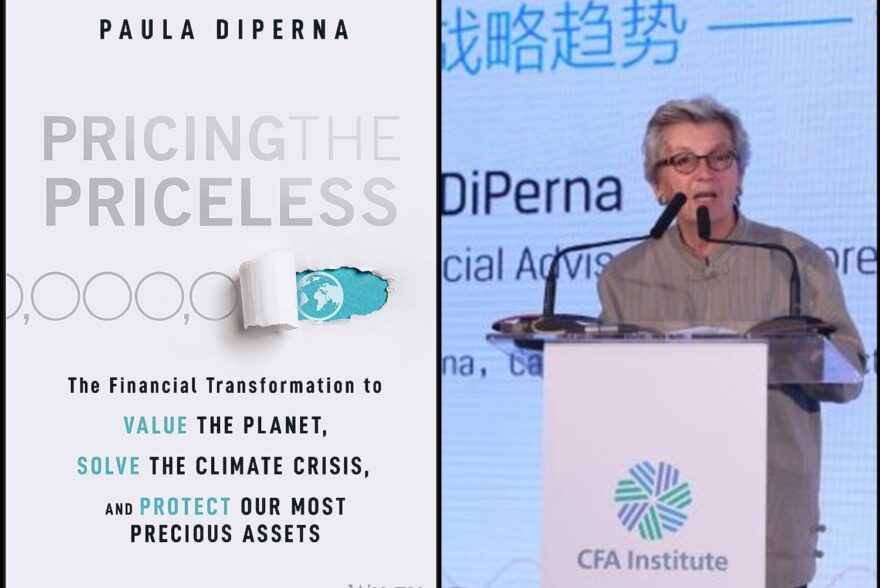Paula DiPerna: On new book “Pricing the Priceless…” and the Forest Resilience Bond


Pricing the Priceless: The Financial Transformation to Value the Planet, Solve the Climate Crisis, and Protect Our Most Precious Assets, a long title for a very succinct book that addresses the financial value—or lack thereof—that, as a society, we place on vital resources such as clean air and water.
Written by: Jessica Alvarez, Communications & Content Manager
“To price the priceless is to bridge the tangible and intangible and embark on a breakthrough that will dictate the prosperity and well-being of everyone, everywhere—a brand-new look at what we value and how.”
That’s a line from the first chapter of renowned environmental strategist, speaker, and author Paula DiPerna’s new book.
Pricing the Priceless: The Financial Transformation to Value the Planet, Solve the Climate Crisis, and Protect Our Most Precious Assets, a long title for a very succinct book that addresses the financial value—or lack thereof—that, as a society, we place on vital resources such as clean air and water. Since its publishing last month, DiPerna’s 8th book has been named one of Financial Times’ Best Summer Reads in Economics.
DiPerna first heard about the Forest Resilience Bond (FRB) in 2016 when she spotted a video of a panel featuring the founders of Blue Forest at the Milken Institute Global Conference. She was then a Fellow at the Bellagio Center, a key program of the Rockefeller Foundation, synthesizing her ideas about environmental finance and pricing intangible natural assets.
It made sense to think of the forest in that way, she says.
“I started paying more attention and digging into it. The next big thing was this idea of stacking—stacking the benefits and beneficiaries so that you bring together different groups who wouldn’t normally be involved together. Insurance companies, hydropower companies, the Forest Service,” she explains.
Since then, her path has crossed Blue Forest’s on a number of occasions, and she’s not only supported our work and mission but has taken the time to understand the FRB so deeply and articulate how it works in a way that even a lay audience can follow.
DiPerna’s deeply experiential, subtly-confessional and soberingly factual storytelling sheds light on the climate crisis while exploring viable solutions to fight it—among them, the Forest Resilience Bond.
Chapter 12 is called “Forests as Infrastructure: The Forest Resilience Bond.” “To keep up with climate change costs,” she says, “we have to think differently.” She then uses the FRB as an example of “a very responsive new idea that thinks differently by using the traditional funding model for infrastructure and applying it in a breakthrough manner, to raise capital upfront to meet the rising costs [of climate change] and invest in extensive forest resilience care.”
The key point she makes in the chapter, she explains, is that “if you account for something as an asset, you must pay more attention to it, and devote sufficient and funding to maintenance, to keep the asset from degrading and losing its core value.” And that’s what the FRB does for forests by increasing resilience to wildfire.
So as not to give too much away, DiPerna is excited to see the FRB both replicated as well as diversified across different landscapes to address various challenges including its potential expansion to Central and South America.
Blue Forest would like to extend its deepest gratitude and support for Paula DiPerna for not only believing in the Forest Resilience Bond, but for exemplifying it in her new publication as one of the solutions to the wildfire crisis.
DiPerna recently appeared on PBS’s Amanpour and Company where she discussed the book generally as well as the chapter on the FRB. Her book is available for purchase at Barnes & Noble, Amazon, and other booksellers.